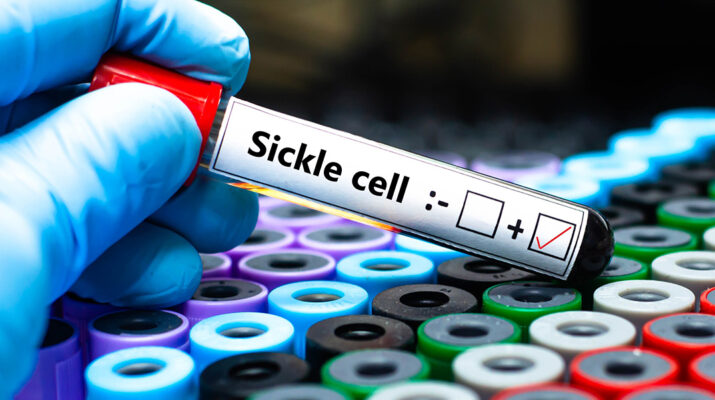By Barbara Pierce
Sickle cell disease remains a significant — yet largely neglected — global health crisis, impacting millions of people worldwide.
Also known as sickle cell anemia, this blood disease is a devastating one that severely disrupts and ends early the lives of those who suffer from it.
It takes a huge toll — physically, emotionally and financially.
SCD is an inherited blood disorder, caused by a genetic defect. It causes the body to make abnormal hemoglobin. Hemoglobin is the protein in red blood cells that carries oxygen to all parts of your body. When you have SCD, your body’s tissues and organs don’t get enough oxygen.
John Hopkins describes it like this online: Healthy red blood cells are round and move easily all over the body. With SCD, the red blood cells are hard and sticky, shaped like the farm tool called a sickle. These damaged red blood cells clump together and can’t move easily through the blood vessels, getting stuck and blocking the flow of blood. This blockage can cause pain as it stops the movement of healthy oxygen-rich blood. It can also damage major organs.
Having a family history of SCD increases your risk for the disease. SCD mainly affects people whose families came from Africa, Central America, South America, the Middle East, Asia, India, the Mediterranean or Southern Europe. One in 365 African American babies in the US is born with SCD.
Each person’s symptoms vary and vary from mild to severe. Some of the symptoms include severe anemia, which causes lack of energy, jaundice, pain which can come on suddenly, stroke, erectile dysfunction, damage to the joints and organs and a life-threatening condition called acute chest syndrome.
“Living with sickle cell disease is like navigating a storm that rages within your body, where waves of pain crash down, stealing away the peaceful moments of sleep you so desperately long for,” said Sakiyyah Burwell-Darden on Facebook. “Each day is a quest for relief that often feels just out of reach, leaving you to find solace in the smallest victories — if only you can ease the pain ever so slightly.”
Things that could trigger a crisis include high altitudes, cold weather or sudden changes in temperature, swimming in cold water, heavy physical labor, decongestants, stress or exhaustion, alcohol and smoking.
In December 2023, the FDA approved two new gene therapies for the treatment of sickle cell disease. This is a breakthrough, as it is the first gene therapy for the treatment of SCD, according to Daniell De Souza of the New York State Department of Health.
These are transformative therapies for SCD, available for patients aged 12 or older, signaling innovative advancements in the field of gene therapy, said De Souza.
Both of these treatments modify the patient’s own blood stem cells. Prior to treatment, the patients’ own stem cells are collected and then the patient must receive high-dose chemotherapy, a process that removes cells from the bone marrow so they can be replaced with the modified cells.
The blood stem cells are modified, then given back as a one-time single dose infusion as a stem cell transplant. The modified hemoglobin prevents the sickling of red blood cells.
In a previous trial, 93.5% of participants achieved a positive outcome from one of the therapies; for the other, 88% reached a significant and positive outcome.
They are a new and sophisticated approach compared to traditional treatments like blood transfusions or pain medication. The cutting-edge treatments have brought hope to those with SCD, but their high price tags are a barrier to access. The new therapies come with a price tag of as much as $3 million for a course of treatment, which can take up to a year, making them inaccessible to most.
That’s the bad news. The good news is that the manufacturers of these two FDA-approved gene therapy treatments have entered into agreements with the Centers for Medicare & Medicaid Services to participate in the cell and gene therapy access Model.
The CGT access model is a promising effort to reduce cost for these potentially curative therapies for those who are eligible. The model launched in January of this year. New York state is participating; several treatment facilities across the state are beginning to offer the treatment.
Here in the Mohawk Valley, we learned that the numbers of people diagnosed with SCD is small, so we were unable to obtain information about where they could learn more about the new treatment.
The New York State newborn screening program provides screening for SCD disease and other genetic diseases for all babies born in New York state. This allows babies who have SCD to be identified quickly and treated early. Early diagnosis and treatment can reduce the risk of problems.

